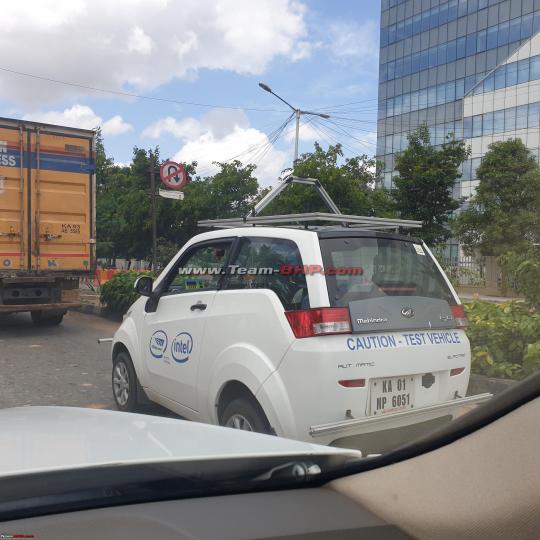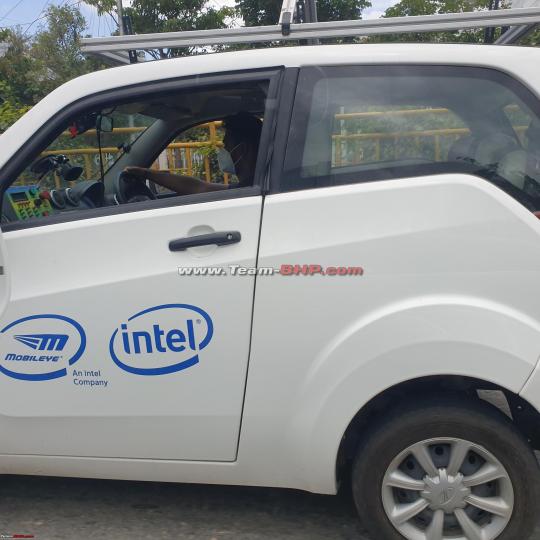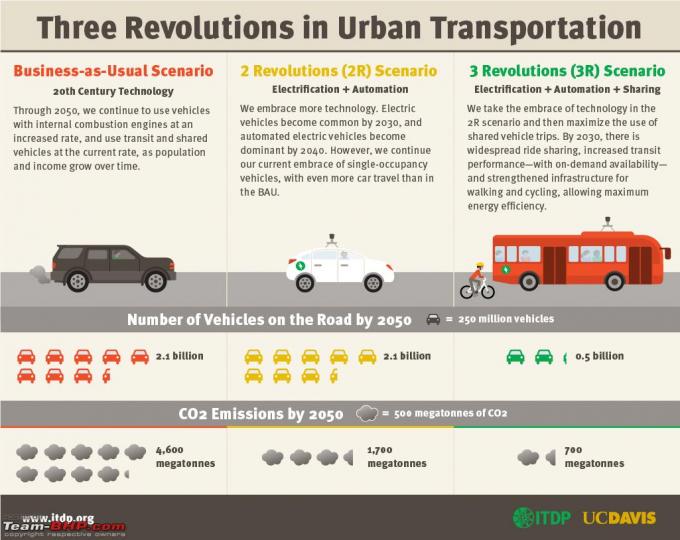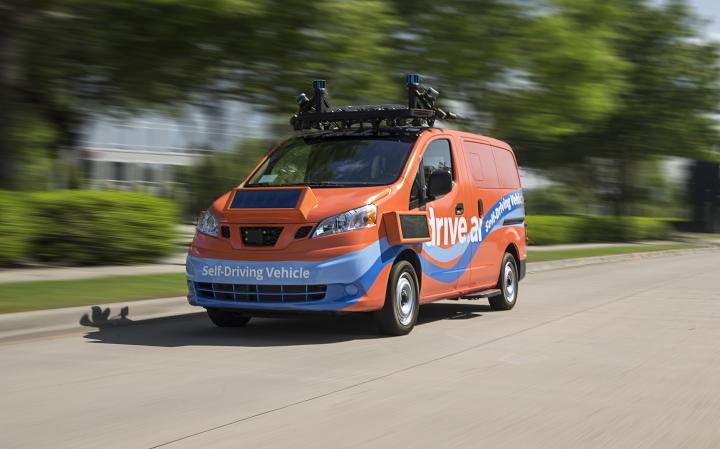News
Will never allow driverless cars in India: Nitin Gadkari
Gadkari estimates that around 70-80 lakh people will lose their jobs.
Nitin Gadkari, Minister for Road Transport and Highways, has stated that he won’t permit autonomous cars in India due to potential job losses.
Speaking on the sidelines of Zero Mile Samvad hosted by IIM Nagpur, the minister said, “I will never allow driverless cars to come into India because it will take away the jobs of several drivers and I will not let that happen.”
Gadkari estimates that around 70-80 lakh people will lose their jobs. He further added that such vehicles are only appropriate for countries with small populations.
US-based EV maker, Tesla, has been eyeing the Indian market for some time now. As you’re aware Tesla cars come with the ‘Auto Pilot’ feature, which gives them semi-autonomous driving capabilities.
Gadkari welcomed Tesla to set up shop in India but reiterated that the cars must be manufactured in India and not imported from China.
Source: TOI
- Tags:
- Indian
- Autonomous Car
News
Jeep developing autonomous off-road driving technology
Driving off-road is a hobby for many, and the new technology could be useful as an assistant,
Jeep is said to be developing a fully-autonomous off-road driving technology for its future SUVs.
The company recently released a teaser video showcasing a pair of Grand Cherokee 4xe prototypes tackling off-road trails in Moab, Utah, in the USA. Both Grand Cherokees can be seen covered in cameras and sensors and at times, driving with no driver behind the wheel.
Details of the off-road autonomous tech are still scarce. However, reports suggest that Jeep could reveal the tech officially sometime later this year.
The development effort is led by Neda Cvijetic, Head of AI & Autonomous Driving at Stellantis. The technology is said to be specifically for the Jeep brand, with Neda aiming to give the SUVs the ability to drive themselves in rugged off-road conditions.
Reports state that driving off-road is a hobby for many, and the new technology could be useful as an assistant, helping drivers get themselves out of complex off-road situations.
Christian Meunier, CEO of Jeep, stated that the new tech would encourage more customers across many countries to join and enjoy the off-roading adventure.
Source: TheDrive
News
USA: Ford moves away from developing full-autonomous technology
Ford even pulled the plug on the Argo AI team last year, which is also backed by VW.
According to a media report, Ford is moving away from testing fully-autonomous tech. The American car giant no longer wants to be exempted from safety standards that allow it to test self-driving vehicles on US roads. The exemption given by NHTSA would have allowed the carmaker to test up to 25,000 autonomous vehicles annually.
Reports state that Ford's change in strategy will see it emphasise less on developing Level 4 automation for its commercial fleet and concentrate more on Level 3 driver assistance systems for private vehicles.
Ford even pulled the plug on the Argo AI team last year, which is also backed by VW. Reports state that Ford felt that driverless technology on commercial vehicles is still years off. Hence it would focus on its BlueCruise driver assistance program.
While Level 3 autonomous vehicles do require a person to be present, a Level 4 system doesn't require any human interaction. The Level 4 autonomous tech is being proposed for rideshare and Robotaxi applications. If approved, these vehicles will be deployed without a steering wheel, pedals, manual turn signals or even mirrors.
Apart from Ford, companies like Tesla and Mercedes-Benz are working on developing Level 4 autonomous technology.
Source: CarScoops
News
Survey: Car drivers don't want fully-autonomous cars just yet
The survey shows that there is still some resistance among people toward full autonomy, especially a few features.
While automakers are working on introducing fully-autonomous cars for the future, a recent survey has shown that drivers still prefer to drive their cars.
According to a nationwide survey conducted by the Insurance Institute of Highway Safety (IIHS), people are fine with some autonomy but still want overall control of their vehicles. The survey shows that there is still some resistance among people toward full autonomy, especially a few features.
As per the survey, 80% of the respondents liked the lane keep assist feature, but 36% wanted a hands-on approach, compared to 27% who wanted full autonomy with the feature. Drivers also preferred to change lanes themselves, rather than having the car do it autonomously. 45% of the respondents agreed they would want to change lanes themselves, compared to just 14% who wanted it to be an autonomous feature.
The survey also stated that most drivers are comfortable with having driver-monitoring strategies, including sensors on the steering wheel or a driver-facing camera to track head, eye and hand movement. This was accepted by most respondents irrespective of whether or not the feature allowed hands-free operation. However, among the two, the steering sensor monitoring feature was met with more enthusiasm, as camera-based monitoring raised concerns about privacy. Having said that, the respondents stated that these monitoring strategies would help prevent drivers from misusing the technology.
Source: IIHS
News
Mobileye spotted testing its tech on cars in Bangalore
It appears that the e2o is equipped to carry lidars and cameras, but the test car had none.
Update on August 6, 2021
We have received clarification from reliable sources that this is only a collision warning system. No data is being collected in the form of videos or images.
Mobileye has been spotted testing a Mahindra e2o electric car in Bangalore. The company is expected to be testing partial autonomy features as well as collecting data on Indian roads. It appears that the e2o is equipped to carry lidars and cameras, but the test car had none.
Mobileye is a subsidiary of Intel and is based in Israel. Back in August 2015, Tesla equipped its Model S electric sedan with Mobileye's self-driving technology. However, a Tesla crash was attributed to the system not recognizing a crossing trailer. Mobileye said that the system would not be able to recognize a trailer and hence Tesla ended its partnership with Mobileye soon after.
In 2017, Intel bought Mobileye for US$ 15.3 billion.
- Tags:
- Indian
- Mobileye
- Autonomous Car
News
Understanding Autonomous Technology and ADAS
These are the words of BHPian saikarthik.
With the advancement of electronics and software, the days of good old plain and simple mechanical and electrical systems in our daily commuters and dear touring vehicles were ended and most of the modern cars that we use are controlled with electronic control units via sensors and actuators. But till this day, for an average car, they just translate the action of the user.
Now, with even more advancements made in the field of Artificial Intelligence and complex electronic hardware, we are witnessing the start of the penetration of autonomous technology into our daily cars (even though currently a niche segment).
What started as driver assist systems for reducing the accidents on the road, have come a long way and extended to autonomous driving even without human interference. But the words driver assistance, automated, autonomous, self-driving which we discuss a lot, look similar but are quite different. There is a widespread misunderstanding of the features and with OEMs now starting to launch these advanced systems in the Indian market (MG Gloster and upcoming Mahindra XUV5OO), we must be a little aware of the technicalities to not get mislead by their marketing and ads.
This thread can be used to discuss all upcoming technologies & features related to ADAS and autonomous driving.
Benefits of autonomous transportation: The potential for dramatically lowering CO2 emissions and others. But when a recent study by ITDP was conducted, combining autonomous technology with EVs and ridesharing will have greater benefits in 2050.
- Reduce traffic congestion (30% fewer vehicles on the road)
- Reduce transportation costs by 40%
- Improve walkability and livability
- Free up parking lots for other uses
- Reduce urban CO2 emissions by 80% worldwide
Before going further, let me try to put some clear differences between the technical jargons that I used earlier, and with the basic requirements and feature explanation.
Self-driving: self-driving car can drive itself in some or even all situations, but a human passenger must always be present and ready to take control.
Autonomous driving: A fully autonomous car would be self-aware and capable of making its own choices.
To identify and have some regulations, the SAE (Society of Automotive Engineers) has classified the autonomous technology into different levels. From level 0 (no autonomy) to level 5 (full autonomy) and in each level, what will be the expectation & responsibility from driver or the system.
Level 0: Full manual control
The driver is responsible for all the actions like in today’s cars which we drive. But where these cars vary from our cars is that the system will alert you. For example leaving the lane or collision warning, autonomous emergency braking (this comes here because it's not a driving function).
Level 1: Driver Assistance
This is the first step for some automation, driver is very much involved but the systems can complement few driver actions but not complete functionality. Cruise control and ACC are examples as the car is just controlling accelerator variation and driver is doing everything else from steering to braking.
Level 2: Partial Automation
This level is the beginning for autonomous control, based on basic input from driver the car can do steering, acceleration and braking all by itself with driver still in control if he needs to. ACC stop and go, Autonomous emergency steering, lane keep, and change assist comes under this level.
Level 3: Conditional automated driving
Level 3 is where the real differentiation stars, the feature can work on its own when requested in most conditions (mapping environment) and need driver in exceptional cases. Example traffic jam pilot, where the car can follow another car changing course and even overtaking if free space is detected.
Level 4: High automated driving
These are called self-driving vehicles using a wide variety of functions to drive by themselves without human interference but allow the human driver to take control if he needs to.
Level 5: Full autonomous driving
There is no human driver requirement for this level, can eliminate all controls related to driving like steering wheel or brakes. These are the vehicles where you can sleep and wake up in another place.
Since full autonomous vehicles are beyond the timelines of basic ADAS featured vehicles, I will address the technical structure and content in ADAS section.
ADAS: Advanced Driver Assist System
Now this is what most of us are interested in and more relevant to India as we are seeing the products on road now. Basically, one or two features creeped into the vehicles here and there before but the latest entrant in D2 segment MG Gloster had launched it as a package.
ADAS itself is very vast and has dozens of features in it but mostly we can segregate into in my own view.
- Driving assistance,
- Object detection and Collision avoidance,
- Road signs and Speed limits,
- Lighting and other passive systems (ESP – has HDC/HHC, TPMS),
- V2X – a different concept but integrates with ADAS functions.
We shall come back for feature explanation, but before that let me list down certain key points
- ADAS interacts with other ECUs and collects/communicates via CAN or Ethernet and cannot function alone.
- HMI (driver controls and information) may be through instrument cluster or additional hardware.
- When V2X and ADAS comes on a car, more emphasis is given to cybersecurity and functional safety.
- There are pre-requisites for certain features to perform, just with ADAS ECU and sensors it cannot give desired result. Example – for Lane keep assist, electronic power steering is mandatory, and for AEBS- ESP is mandatory.
- ADAS hardware cannot be retrofitted or introduced into a car without some prior design protection.
- There is a lot of focus on integration with mechanical systems which you may have not even imagined, so modification in aftermarket will be tough.
Everyone will have queries on which additional parts are needed for ADAS, so let me just show it with a picture and the functions possible with each sensor.
So, from the above pictures we can get an idea how a manufacturer can choose the hardware required for the features as some components can perform to provide multiple functions and some functions need multiple sensors to give a proper result.
If multiple sensor inputs are combined for a feature, then it is called sensor fusion. Sometimes all the sensors can be connected to a single powerful controller to perform all decision making. It depends on various factors including the cost and development strategy.
Also, each sensor has its own advantage and disadvantage and on higher terms.
Camera: Vision based, so the weather and dust will affect its performance. Usually good for object classification with range up to 150 meters. Even the low light performance is good now. Can perform many functions.
Radar: Radio frequency based in mm range. Less affected by weather and has longer range. More accurate on distance and speed analysis. Poor border definition so object classification is not so good.
Lidar: Laser pulse based, expensive, medium range and better environment 3D mapping and object classification.
Now let us get down to features and their explanation. I will just stick to high level and the 5 sections mentioned above as explanation for regular features is vast and repetitive with a ton of material available online (links will be shared). And one example on how sensors get the information, processed and actuation is done.
1. Driving assistance features:
These help by freeing up the driver to make only important controls. Most of the features need Lane markings, road edge detection and free space calculation
Some notable features area. Cruise control – There are multiple levels from simple acceleration control (fixed speed), to Adaptive cruise (maintaining a headway with the vehicle in the front).
ACC stop and go (complete halt and resume).
Some even recognize the speed limits of the road and vary the set speed themselves so that the driver will not get a speeding ticket.
Typical Sensors: Front ADAS Camera, Radar (not compulsory, but better results).
Typical Controls: Acceleration and deceleration via Engine control, braking and brake lights.
b. Lane Support systems – Again, there are many levels.
First is the lane departure warning, where only warning is given, and driver needs to act. Secondly, Lane keep assist, where the system keeps the vehicle in lane.
Third, Lane centering assist -this is for perfectionists and I can be sure that Germans would have come up with this feature. Maintains the vehicle equidistant between two lanes.
Fourth, Lane change assist, you just must turn on the indicator and the vehicle will move to the next lane if there are no vehicles in the path.
Typical Sensors: Front ADAS Camera, ORVM mounted cameras or sensors.
Typical Controls: Steering via EPS, Indicator control and driver HMI.
c. Blind spot detection system – This can be helpful for both lane changes and even collision avoidance or parking.
Typical Sensors: ORVM mounted cameras or sensors, rear and front ultrasonic sensors.
Typical Controls: Driver HMI.
2. Object detection and Collision avoidance:
These features can make life and death decisions, and this is where most of the debate currently is going on in almost all international regulatory forums.
As this is very vast and complex, let me just post few pictures. Basically, the radar, lidar and camera map the complete environment and track all the objects and their motion. They then calculate time to collision if collision is imminent and issue a warning to driver before braking.
There are categories in object classification – static (poles and trees, walls and what not) and dynamic (Cars, pedestrians, cyclists) with even more scenarios if they are moving, braking, coming from near side or far side and etc…
Typical Sensors: Camera, Radar, Lidar.
Typical Controls: Driver HMI, braking via ESP.
3. Road signs and Speed limits:
These features come in handy for avoiding penalties in case if one misses noticing important road signs on a highway or city. The camera unit senses the traffic signs and can either warn the driver or reduce the speed by themselves. Note that it is not just speed limits there are literally dozens of road signs from “give way to stop”.
Typical Sensors: Camera, Navigation and vehicle speed.
Typical Controls: Driver HMI, braking via ESP.
I am limiting the explanation to the first 3 sections and please go through the following wiki link for more features.
https://en.wikipedia.org/wiki/Advanced_driver-assistance_systems
I hope that this thread will be useful for basic understanding on ADAS and we can continue to discuss the upcoming features in different vehicles that are introduced in India/other locations.
Image credits and Sources: Continental official site, Google.
News
Skill-Lync launches Master's autonomous driving course
YCombinator backed startup 'Skill-Lync' has launched a Master's course for Autonomous Driving. This course is designed to give students a hands-on approach to learn and develop model-based control strategies for driver-assist systems. The startup, which has its headquarters in India, provides courses for Mechanical, Electrical, Civil and Computer Science Engineering students in India and across the world.
The Master’s Program in Autonomous Driving covers a step by step formulation to understand the complete process in building an autonomous vehicle. It offers learning skills and techniques used by self-driving car teams at companies around the world. The course is 8 months long and comes with a 0% EMI option.
This course focuses on both in-depth theoretical and on-hand practical knowledge and teaches students how to develop strategies in a simulated environment. The program is divided into 5 modules, each one of which is accompanied by projects for practical learning. The modules are as follows:-
- Applying Computer Vision for Autonomous Vehicle
- Practical Artificial Intelligence For Autonomous Vehicle
- Localization, Mapping & SLAM
- Path Planning & trajectory Optimization
- Autonomous Vehicle Controls
In addition to the 5 modules that are currently present in the curriculum, the company is planning to add 3-4 additional modules that will cover the next wave of driverless car development.
The focus in this course is to make the students finish the projects as a part of each module. The whole Master's coursework consists of 10 projects and 30 assignments spread across an 8-month period. Apart from on-demand videos that the students can access, they have live 1-1 video conference sessions with the instructor in order to get their doubts clarified. As a part of the course, students also end up working on projects with the aid of industry-oriented software tools such as Python, Tensorflow, Kras, MATLAB-Simulink, Carmaker and experience different control strategies within their projects, Such as LQR, Rule-based, PID, state-flow, etc.
Engineers from Computer Science, Mechanical, Electrical & Electronics engineering can take this course and understand different aspects of the autonomous vehicle development process. Working professionals who would like to shift their career path towards autonomous vehicles or anyone with a desire to work in the automotive controls domain can also take up this course. With this course, the students will have a hands-on experience to develop an ADAS system from Level 1 automation to Level 3.
News
BMW, Mercedes halt joint development of autonomous tech
Mercedes-Benz and BMW have suspended their partnership to jointly develop autonomous driving technology, citing high costs and adverse economic conditions.
The two German carmakers had announced their plans to collaborate in February 2019. They had plans to develop next generation autonomous systems including fully-autonomous Level 4 tech. The first cars fitted with this technology were scheduled to arrive in 2024.
The carmakers have said in a statement that they would continue to concentrate on their existing development paths. Mercedes-Benz will focus on decarbonisation and digitalisation, while BMW will be working on sensors and computing power as well as its modular system.
News
2021 Mercedes S-Class could come with Level 3 Autonomous Tech
According to a media report, the next-gen Mercedes-Benz S-Class could be the first production car to get Level 3 autonomous driving technology.
The report suggests that the system is still under test and will have to go through homologation. It could allow drivers to take their eyes off the road while driving and only intervene when asked to by the car’s computer. It is said that Tesla's Autopilot system is classified as a Level 2 system but the company claims that it is capable of Level 5 autonomy. The Audi A8 is also said to come with Level 3 autonomy, but the feature has not been activated.
The next-gen S-Class is likely to come with petrol and diesel powertrains with hybrid options. An all-electric variant could also be launched. On the outside, the car could get headlights and taillights similar to that of the CLS. On the inside, it will get a Tesla-esque, portrait-style touchscreen system and a digital instrument panel.
Source: Carscoops
News
Self-driving startup Drive.ai bought by Apple
According to a media report, Apple has bought self-driving startup Drive.ai. The report suggests that Drive.ai was on the verge of shutting down and was planning to lay off its 90 employees.
Drive.ai was founded by machine learning researchers from Stanford University in 2015. The company operates a ride-hailing service using modified autonomous Nissan NV200 vehicles fitted with LED screens on the outside to warn pedestrians and other motorists. The vehicles are allowed to run in a limited area in Arlington, Texas.
It is reported that Apple has bought the company's assets, including the autonomous cars. It is unclear if Drive.ai's employees will be absorbed by Apple or will be laid off. The acquisition is expected to help Apple's Project Titan, which aims to build an electric, autonomous car.
Source: The Verge
Pages




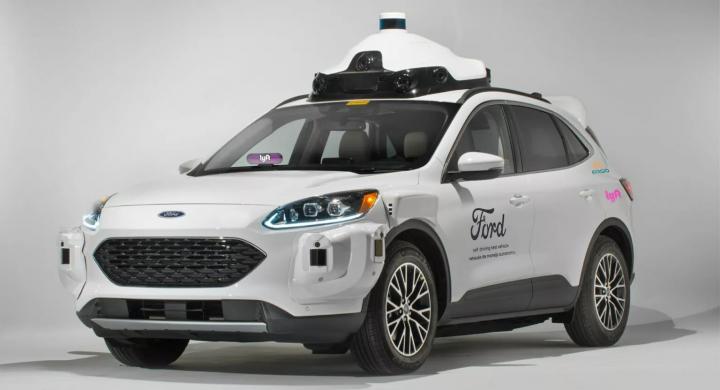
_2.jpg)
